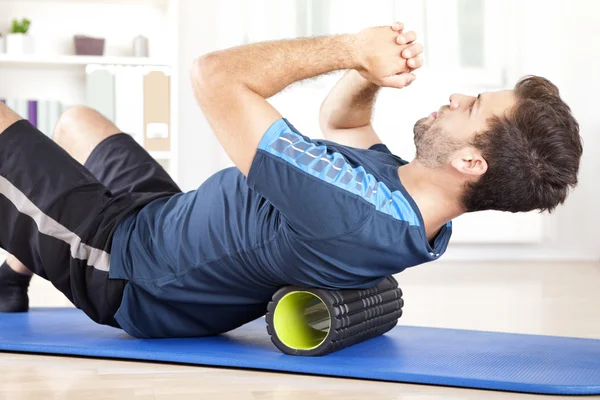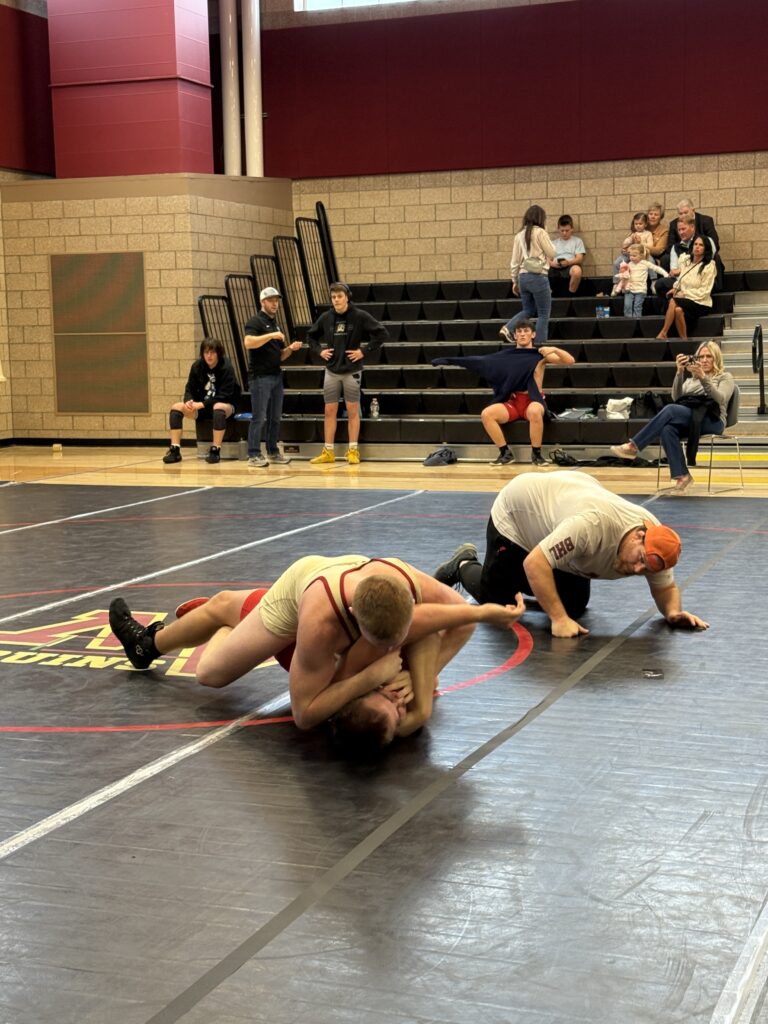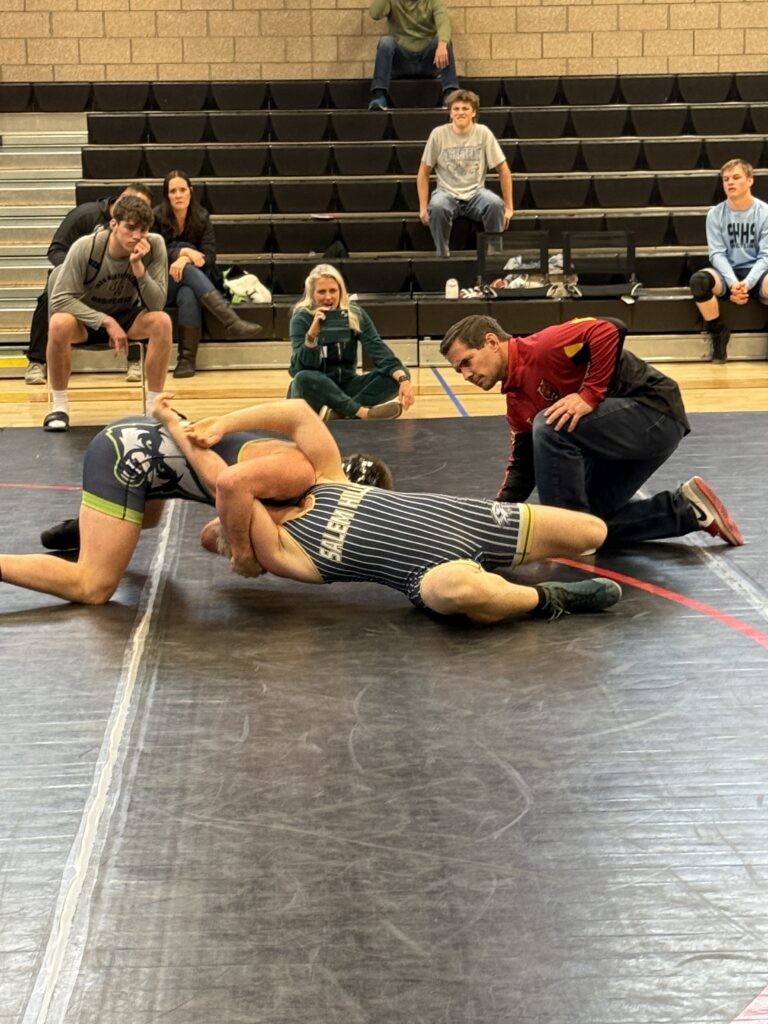 As any wrestler knows, the intense physical demands of the sport can leave your muscles feeling sore and tight. Whether it’s from grappling, takedowns, or the constant strain on your body, muscle recovery is essential for staying in peak performance. One of the most effective ways to aid in recovery and improve flexibility is foam rolling. In this post, we’ll explore the benefits of foam rolling, how to do it properly, and why it’s a must-have tool in your recovery routine.
As any wrestler knows, the intense physical demands of the sport can leave your muscles feeling sore and tight. Whether it’s from grappling, takedowns, or the constant strain on your body, muscle recovery is essential for staying in peak performance. One of the most effective ways to aid in recovery and improve flexibility is foam rolling. In this post, we’ll explore the benefits of foam rolling, how to do it properly, and why it’s a must-have tool in your recovery routine.
What Is Foam Rolling?
Foam rolling is a self-myofascial release technique, which involves using a foam roller to apply pressure to the muscles and fascia (the connective tissue surrounding your muscles). This process helps to release muscle knots, reduce tension, and improve blood circulation. For wrestlers, foam rolling can be a game-changer when it comes to speeding up recovery and enhancing flexibility.
Why Wrestlers Should Foam Roll
After grueling wrestling sessions, muscles often become tight and fatigued, which can limit mobility and hinder your next practice or match. Foam rolling can help with:
- Muscle Recovery: Foam rolling helps to alleviate soreness and muscle tension by breaking down adhesions and knots in the muscle fibers. This promotes faster recovery and reduces the chances of injury.
- Increased Flexibility: Wrestling requires flexibility, especially for moves like leg sweeps, splits, and bridging. Foam rolling helps lengthen tight muscles and improve your range of motion.
- Improved Circulation: Rolling your muscles helps boost blood flow to areas that may be deprived of nutrients, helping you recover faster and more effectively.
- Prevent Injury: By keeping your muscles and fascia loose, you reduce the risk of developing muscle imbalances or injuries that can arise from tight muscles. Foam rolling helps you maintain a balanced and healthy body.
- Relieves Tension: After a hard practice, your body naturally holds onto built-up tension. Foam rolling can be a great way to relieve that stress, allowing you to feel more relaxed and less fatigued.
How to Foam Roll for Wrestlers
Foam rolling is simple, but it’s important to do it correctly to get the best results. Here’s a step-by-step guide on how to foam roll effectively:
- Start with Your Legs
Begin by sitting on the floor with your legs extended in front of you. Position the foam roller under your calves, and slowly roll back and forth from your knees to your ankles. Apply pressure on areas that feel particularly tight or sore. - Target the Quads
Next, move the foam roller up to your quadriceps (front of your thighs). Lie face down and place the roller just above your knees. Roll slowly from your knees to your hip flexors. This will help alleviate tightness from squats, lifts, or any moves that involve strong leg power. - Focus on Your Hamstrings
Sit with your legs extended, and place the foam roller underneath your hamstrings. Roll from your knees up to your glutes. Hamstrings can become tight from takedowns, so foam rolling this area is key to maintaining flexibility and strength. - Roll Your Back
Place the foam roller on your upper back (near your shoulder blades) and use your legs and arms to control the movement. Slowly roll up and down your upper back, moving down to your lower back if needed. Be mindful not to roll directly on your spine, but rather on the muscles surrounding it. - Use the Roller for Your Shoulders and Neck
Wrestling puts a lot of strain on the shoulders and neck from constant positioning and pressure. To foam roll your shoulders, lie on your side and position the roller underneath your armpit, rolling slowly to your shoulder blade. For the neck, use a small roller to gently massage the upper traps and surrounding muscles. - Don’t Rush
Take your time and focus on areas that feel particularly tight. Aim for 30-60 seconds on each muscle group. The goal is to gently apply pressure to release knots and promote muscle relaxation.
Pro Tips for Effective Foam Rolling
- Breathe Deeply: As you roll, focus on deep, slow breaths. This helps relax your muscles and enhances the effectiveness of foam rolling.
- Use Controlled Movements: Roll slowly and methodically. Don’t rush through it. Slow movements give your muscles more time to release and relax.
- Consistency Is Key: Foam rolling isn’t a one-and-done activity. Incorporate it into your routine after every practice or workout for best results.
When to Foam Roll
While foam rolling is an excellent recovery tool, it’s best used at specific times for maximum benefit:
- After Practice: The most common and beneficial time to foam roll is after a practice session. You’ll likely feel sore, and foam rolling can help reduce that tightness and speed up recovery.
- On Rest Days: Even on days you’re not wrestling, foam rolling can keep your muscles loose and prevent stiffness.
- Before a Workout: Foam rolling can also serve as a great warm-up. By loosening your muscles, you help prepare your body for the strain of wrestling, reducing your risk of injury.
Conclusion
Foam rolling is a must-have recovery tool for wrestlers looking to improve flexibility, reduce soreness, and prevent injury. By incorporating foam rolling into your post-practice routine, you’ll notice better mobility, less muscle tightness, and faster recovery times. It’s a simple yet powerful way to keep your body in top shape for the next match.
Remember, recovery is just as important as training! So, roll out those muscles and get back to feeling your best. 🌟
Have you tried foam rolling? Let us know your thoughts or share your favorite recovery tips in the comments below!
Call to Action:
Looking to elevate your recovery game? Start foam rolling after every practice! And if you’re a seasoned roller, drop your best foam rolling tips in the comments. Let’s learn and grow together!






